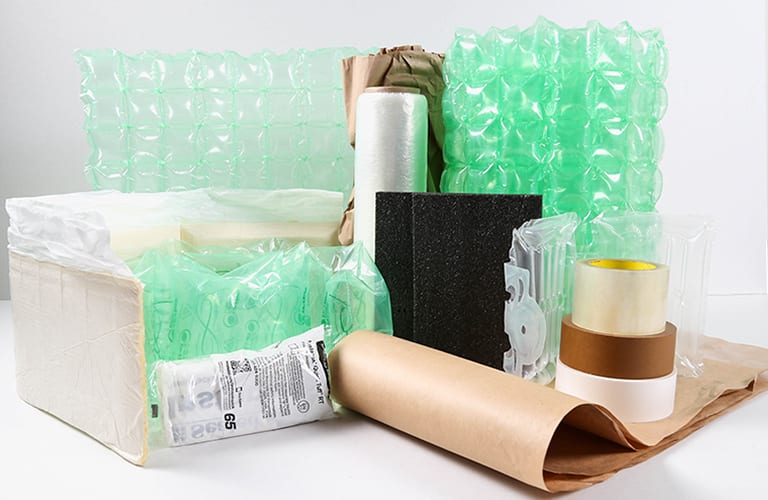One of the easiest ways to become more sustainable: Use less material in packaging. Material reduction decreases the need for, and cost of, manufacturing brand new materials. It reduces the greenhouse-gas emissions from the energy used in the materials’ production and shipping. Using less material also reduces the amount of waste that will need to be recycled or sent to landfills and incinerators.
Material Reduction
“It’s important that you’re not utilizing more product than what is needed to get the job done,” said Jeff Steele, National Industrial Sourcing Manager for Premier. “Target assessments and testing can help ensure less wasted materials as well as uncover savings.”
Let’s say you are sending out your product in a 19 x 24, 2.5-mil poly mailer that weighs .076 lbs each. Jeff points out that switching to a 2-mil poly mailer weighing .0608 lbs will save you 20% in materials. “If you are purchasing 600,000 poly mailers per year, you would reduce your overall material by 9,120 lbs,” he said. “Customers shipping apparel and other lighter weight products with minimal sharp edges can typically make this switch easily.”
(Wondering about the sustainability of using poly mailers, plastic film, and poly bubble mailers? Many grocery stores and retail centers that serve as collection points for plastic bags will accept these materials for recycling too.
Right Sizing
Having the right size package—one that minimizes empty interior space and still adequately protects your product—is also very important.
“Right-sizing can eliminate waste and greatly reduce cost,” said Michael Steele, Design Manager – East, for Premier. “Smaller box sizes also help optimize the logistics side, with more packages being able to fit in a shipping container (sea, truck, plane, etc.). That results in less total transport costs and fossil fuel usage,” also good for the environment. Smaller parcels also have a smaller dimensional weight, so the shipping costs will be lower.
Inside the box: “The larger the void, the more opportunity there is to shrink the box’s overall footprint,” said Jeff. “Start taking as much air/space out of the box, and from there you can begin looking at the appropriate void fill options for protecting the contents.”
These range from inflatable void fill such as air pillows to paper, usually the best fill option for small voids or products that may have sharp, pointy edges. “There are innovative engineered papers that can take up more space while using less materials,” Jeff said. “Paper is also a curbside recyclable option, which is a plus when looking at sustainability.”
Of course, your packaging must work for your specific products. If you would like to investigate using less material for sustainability or other reasons, please reach out! We can hel

